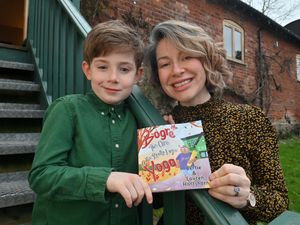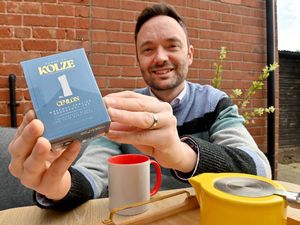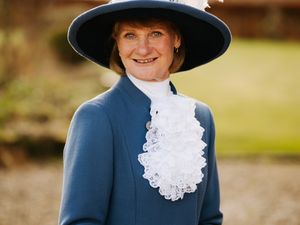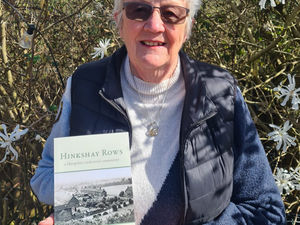Tunnel breakthrough did not herald a meeting of minds
October 30, 1990, the day the isolation ended.
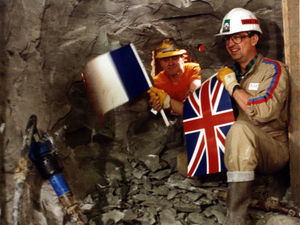
For the first time since the Ice Age, mainland Europe was no longer cut off.
Well, that's one way to look at it anyway.
Deep below the English Channel, British construction workers pushed a two inch (5cm) probe through to their French colleagues.
In a hugely symbolic moment, the respective teams digging the Channel Tunnel had made contact.
″It is an example of what Europe is about,″ British Prime Minister Margaret Thatcher said in London.
″This is Europe in practice.″
And a construction union official said: ″It means, in effect, that Britain is no longer an island.″
Little did they know. As Brexit has shown, linking Britain physically with mainland Europe 30 years ago is a different kettle of fish to forging a lasting psychological link-up.
That historic meeting was at 128ft (39m) below the sea floor. At that time the British teams had bored 13.7 miles, and the French 10 miles, the difference in progress being accounted for by different geological conditions.
They were very slightly out of alignment, by 30cm (about 1ft) horizontally and 8cm (3in) vertically.
And yes, you're getting a mish-mash of metric and imperial measurements, but then in 2020 some Brits think in imperial, and some in metric – which rather underlines Britain's European conundrum.
This was just a probe. The human link was made on December 1, 1990, when at 12.12pm, French tunnel worker Philippe Cozette shook hands with British tunnel worker Graham Fagg. The pair taking their place in history were chosen in a ballot. The event was broadcast live on television.
The new British Prime Minister John Major – Mrs Thatcher had quit only a few days before – declared that it was "a symbol of the opportunities that will exist throughout the new Europe."
It was to be not far short of four years later that the Chunnel, as the Channel Tunnel is often called, was officially opened by the Queen and France's President Mitterand on May 6, 1994.
And it was on Monday, November 14, 1994, that the first fare-paying Eurostar passenger train arrived in Paris.
So the dreamers had finally triumphed over the doubters.
The dream had begun as early as 1802, when the idea of a tunnel was first put down on paper by a French mining engineer, Albert Mathieu-Favier.
He imagined a two-level tunnel just big enough to take a coach and horses, ventilated by chimneys rising through the seabed, up through the Channel, into the air.
It would, he said, be illuminated by oil-lamps, with an artificial island in the middle of the Channel where teams of horses could be changed.
The top level would be used by stagecoaches, and the lower level by groundwater flows.
Whether or not his scheme was technically possible, it was politically impossible, as Britain and Napoleon did not exactly see eye-to-eye.
The advent of the railways was to give a new dimension to the problem and during the 19th century various ideas for a tunnel or crossing were worked on, and in 1880 work actually started on both sides of the Channel.
Yet although Britain and France had been at peace for decades, there was still an underlying fear that a tunnel could be used by invading forces.
A letter to The Times in 1881 said it could easily be seized by the French and that "in three hours a cavalry force might be sent through to seize the approaches at the English end."
The work was abandoned not long afterwards, but the idea just wouldn't go away.
In 1974 work started on another tunnel, which to French dismay was abandoned by the British Government in 1975 because of the spiralling cost and the dire general economic position.
It was under Margaret Thatcher in the 1980s that a treaty was signed with France for another go. Tunnelling began in 1988 and unlike the previous attempts, there no pulling out by either side this time round.
It was the largest civil engineering project in Europe to be financed by the private sector. Construction went 80 per cent over its budget at £9bn.
The Chunnel, which runs from Folkestone to Calais, in fact comprises three tunnels, two for trains travelling in opposite directions, and a third service tunnel.
It is not, as some people seem to think, laid on the sea bed, but has been drilled through the underlying bedrock.
Total length is 31 miles, starting a few miles inland on each side.
After the completion one of the huge boring machines was left buried in the tunnel where it remains today, and another was sold on eBay in 2004 for £39,899 – which did not include delivery – with the money going to charities chosen by staff at Eurotunnel.
Almost five million cubic metres of chalk were excavated from the British side and were dumped into the sea at the base of Shakespeare Cliff to form a 90-acre nature reserve called Samphire Hoe, which was created from scratch by Eurotunnel and takes its name from the rock samphire wild plant.
You could argue that the twists and turns of the Channel Tunnel are like a metaphor for relations between Britain and mainland Europe.
Working together, they are capable of triumphantly overcoming great challenges, but in the background are always the questions of politics and funding which can hold things back.
That link-up between Britain and mainland Europe 30 years ago in an atmosphere of co-operation was a historic meeting. But events since have underlined that it should not be confused with a meeting of minds.
And one last irony. Graham Fagg, the British tunneller who made that breakthrough in 1990, supported Britain's membership of the then Common Market in the 1975 referendum. But he voted Brexit in the 2016 referendum.

